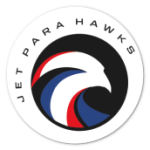
Already a qualified Paramotor Pilot? Then why not try our conversion course to learn all about flying the Jet Para Hawk.
The equipment is obviously massively different, but the skills required for flying are not much more than what’s required for standard paramotoring.
However, the big differences can be realised when launching and ground handling as the Jet Para Hawk fits high on the back and very solid to the shoulders, as well as being lighter and having no propeller torque they do take a little getting used too..
When embarking on the exhilarating journey of becoming a jet pilot, it is essential to understand that the biggest difference compared to the traditional Paramotor is the equipment training that is required. As a jet pilot, you must learn how to meticulously prepare the jet for flight, master the starting and stopping procedures, and master the after-landing procedures to ensure a safe and successful flight in a very different way to what you’ve been used too.
Additionally, basic maintenance and preventive measures are crucial to ensure a smooth operation and to increase the lifespan of your jet. Understanding the fuel types and preparation is a necessity; it requires the right fuel and oil mixture, priming techniques, and cooling procedures to ensure optimal performance. Neglecting any of these critical aspects could lead to dangerous and costly consequences.
As a jet pilot, you must also take extra care to avoid damaging your wing during launching and landing. It is imperative to be mindful of the hot exhaust and take the necessary precautions to protect the wing’s integrity.
Overall, becoming a jet pilot is a thrilling privilege that comes with significant responsibility. By acquiring the right equipment training, basic maintenance proficiency, and attention to detail, you can ensure a safe, successful, and memorable flight every time.